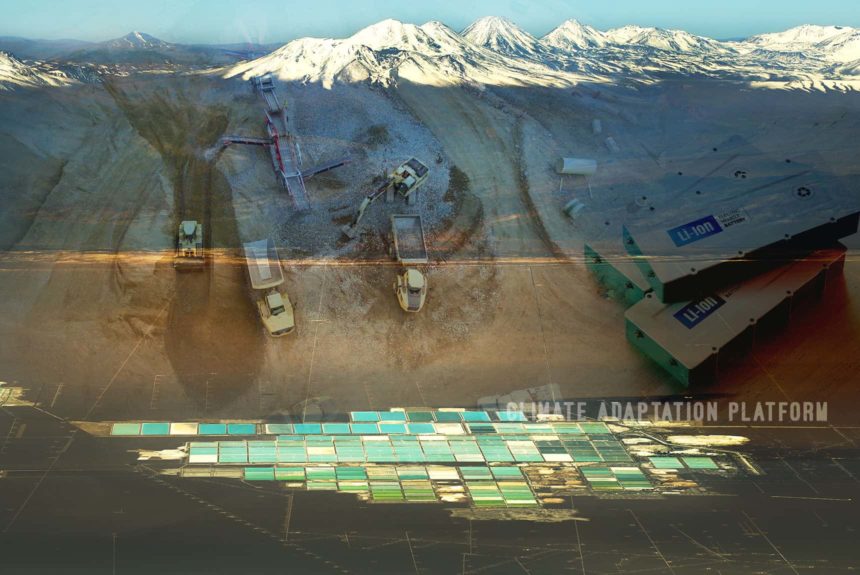Lithium, the lightest metal known on our planet, is the most favoured and widely used element in making batteries for electric cars, mobile phones, laptops, and even aircraft.
The most popular application of Lithium-ion is powering electric vehicles. While there are various batteries, lithium-ion emerges as the favourite among EV and electronic device manufacturers because of its performance and durability.
As governments worldwide push for net-zero by 2050, EVs’ sales are set to increase in the following decades.
Euronews projects that EVs will account for 60% of new car sales by 2030. As demands for EV’s skyrocket in the following decades, the need for more lithium will also increase (Campbell, 2022).
Fortunately, there are plenty of lithium deposits around the world. According to the NS Energy article, “Top six countries with the largest lithium reserves in the world,” largest reserves are in south American countries Bolivia (21 million tons), Argentina (17 million tons), and Chile (9 million tons), followed by the United States (6.8 million tons), Australia (6.3 million tons), and China (4.5 million tons) (Fawthrop, 2020).
Lithium is mainly sourced from salt brines in South America and spodumene (hard rock in Australia), where the largest reserves are found.
The expansive salt lakes in Chile, Argentina, and Bolivia represent enormous mining operations. However, the salt brine lakes or ‘salars’ in South America have caught international attention due to the environmental impacts of lithium mining in its nearby communities.
Lithium is a non-renewable mineral. Its extraction is comparable to fossil fuels mining, resulting in soil degradation, water shortages, biodiversity loss, damage to ecosystem functions, and global warming (Campbell, 2022).
Mining Lithium in South American countries increasingly affects nearby communities and threatens their access to water. Lithium extraction in these salt lakes involves digging up the underground briny water then letting huge amounts of water evaporate to harvest the mineral. It threatens the nearby community’s access to water.
Moreover, these salt flats containing lithium are in arid territory, which makes water a very precious commodity. Access to water is vital for local communities, their livelihood, and flora and fauna.
Chile’s Atacama salt flats, mining consumes, contaminates, and divers scarce water resources away from local communities, and the extraction of lithium has also caused water-related conflicts with different communities (Campbell, 2022).
Should we stop extracting lithium?
A study published in the journal Nature recommends using common and environmentally friendly materials to develop new batteries to replace lithium (Turcheniuk, et.al., 2018).
They claim that lithium and cobalt reserves are not enough to meet future demands and suggest developing batteries from iron and silicon, more common elements, as alternative elements.
Reducing the impact of lithium mining.
Lithium is crucial to the battery technology that will provide a route out of fossil-fuel dependence. At the same time, investors and environmental advocates want that mining won’t adversely affect communities and the environment.
Greenbiz cites three advances that could mitigate the impacts of lithium mining on the environment, especially on water use (Bolton, 2021).
“Direct lithium extraction, a new method, uses almost no water. Another method employs naturally occurring underground steam instead of outside supplies of water. And a third immerses reusable ion-exchange beads to extract the dissolved metal from the salty brines below the surface.”
However, improving extraction techniques is just a step to boost lithium production that could reduce the operation’s social and environmental costs to the community.
The article suggests that the way to increase ‘buy-ins’ or attract more investors, mining companies would need to be more transparent and accountable in their operations and reports, provide information to environmental studies when requested, and offer information to communities on how their operations might affect them.
Source:
Campbell, M. (2022, February 2). South America’s ‘lithium fields’ reveal the dark side of our electric future. Euronews. Retrieved from https://www.euronews.com/green/2022/02/01/south-america-s-lithium-fields-reveal-the-dark-side-of-our-electric-future
Fawthrop, A. (2020, November 19). Top six countries with the largest lithium reserves in the world. NS Energy. Retrieved from https://www.nsenergybusiness.com/features/six-largest-lithium-reserves-world/
Bolton, R. (2021, August 11). Lithium mining is booming – here’s how to manage its impact. GreenBiz. Retrieved from https://www.greenbiz.com/article/lithium-mining-booming-heres-how-manage-its-impact
Turcheniuk, K., Bondarev, D., Singhal, V., & Yushin, G. (2018, July 25). Ten years left to redesign lithium-ion batteries. Nature. Retrieved from https://www.nature.com/articles/d41586-018-05752-3



Leave a Reply